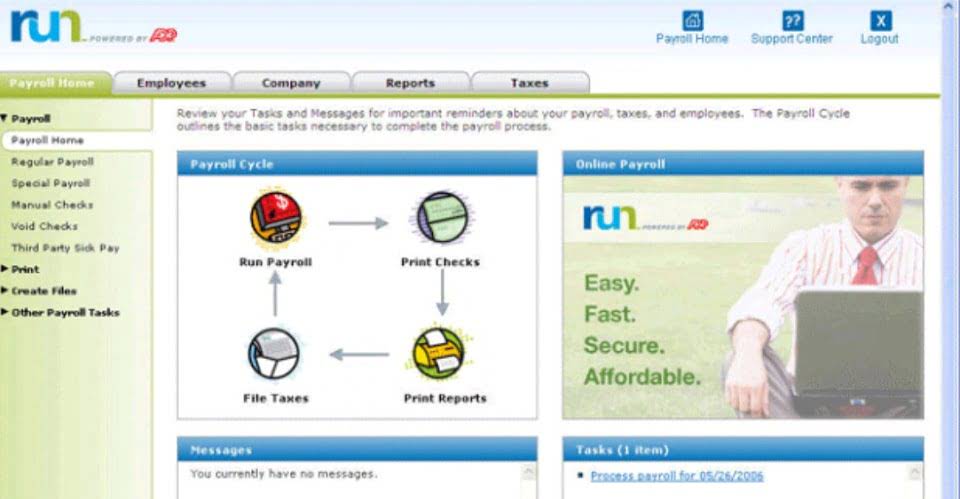
Overall, analyzing cash flow variability is crucial for non-profit organizations to ensure they have a stable and sustainable financial position. By understanding the factors that contribute to QuickBooks ProAdvisor cash flow fluctuations and implementing effective cash flow management strategies, organizations can better navigate financial challenges and fulfill their mission. In addition, it is important to evaluate the effectiveness of cash flow management strategies. This includes assessing the organization’s ability to generate cash inflows and manage cash outflows. By analyzing these strategies, organizations can identify areas for improvement and make informed decisions to optimize their cash flow position.
How to Interpret the Statement of Cash Flows
- Board members and other leaders can use this statement for better insight into how much is available to pay expenses.
- For the past 52 years, Harold Averkamp (CPA, MBA) has worked as an accounting supervisor, manager, consultant, university instructor, and innovator in teaching accounting online.
- The reporting of investing activities helps stakeholders understand how the nonprofit is planning for future growth and managing its investment portfolio to support long-term stability.
- This report uses the indirect method, which is explained in the Statement of Cash Flow (Indirect Method) section above.
- These financial statements are crucial for stakeholders to assess the financial performance and stability of a nonprofit organization.
- If you haven’t already, make sure to schedule time to review your financial statements and start using them as powerful tools for strategic decision-making.
Good nonprofit accounting practices are therefore essential to managing a well-run nonprofit. These differences underscore the unique challenges and priorities of nonprofit financial management, emphasizing the need for tailored approaches in preparing and interpreting cash flow statements in the nonprofit sector. Similarly to other financial statements, it summarizes the data stored in your organization’s accounting system so it’s easier to interpret. Most nonprofits compile this report on a monthly basis, since it helps keep their spending and revenue generation aligned with their annual operating nonprofit cash flow statement budgets. When analyzing cash flow variability, it is important to understand the factors that can cause fluctuations in a non-profit organization’s cash flow.
Importance of Accurate Cash Flow Projections

Nonprofits, similarly to other legal entities, constantly work on improving the way their work is done. Ensuring complete accuracy in these statements requires a robust financial infrastructure and support from specialized nonprofit accounting professionals. Nonprofit accounting has complex areas, and there are many nuances that must be considered during the preparation of these statements. Nonprofits occasionally fail to account for these restrictions and later encounter problems when they unintentionally use restricted funds for a different purpose. Doing so runs the risk of upsetting donors and can cause issues with the audit process. Regardless of whether you’re new to the nonprofit world or an experienced industry leader, navigating financial statements can be challenging.
Work with the experts at Jitasa to create and analyze your nonprofit’s statement of cash flows.
For the past 20 years, we used the desktop version of PayPal because we initially had our central administration in the greater Seattle area. Since we are online, our Board of Trustees and administrators have increasingly been located all across the country. In 2019, it became clear we needed an online solution, and based on contribution margin available options, we choose Quickbooks Online. It turned out to be a remarkably time consuming and frustrating process to go from the desktop to the online version. And it was made worse by Quickbooks support that appeared designed to service the inhabitants of Dante’s seventh level of hell. One critical area of this transition was, of course, getting a quick and accurate import from PayPal, Stripe and Square.
If you prefer a hands-on approach, manually preparing the statement of cash flows (SCF) using tools like Microsoft Excel or Google Sheets can be effective. It allows for a customized approach but requires a keen eye for detail and regular updates to reflect current financial status. The Statement of Cash Flow is a tool for non-profits to manage their financial resources effectively, ensure program continuity, and build trust with donors and grantors. To learn even more about nonprofit financial reporting basics, as well as other fund accounting tips, check out our Accounting Fundamentals Revisited webinar series. When preparing or using a Statement of Cash Flows, several common mistakes can lead to inaccurate financial reporting or misinterpretation of the organization’s cash position.
It captures your assets (what you own), liabilities (what you owe), and the difference between them (your net assets). As an executive or financial officer, make it a habit to regularly review all financial statements. Instead, review your Statement of Activities, Statement of Financial Position, and Cash Flow Statement monthly or quarterly.


Months prior to the selected month will display actuals, while those after the selected month will display budgets based on the budget version selected. It shows the net cash provided or used by the organization’s day-to-day operations. To effectively implement accounting policies, nonprofit organizations should establish internal controls and procedures. This includes segregating duties, conducting regular audits, and maintaining proper documentation. By having strong internal controls, nonprofit organizations can minimize the risk of fraud and errors in their financial statements.

Encouragement for Continuous Learning and Adaptation in Financial Management

Depicted on a nonprofit cash flow statement, they allow leadership and stakeholders to understand how effective they are in managing financial resources. Understanding these differences is crucial for stakeholders in both sectors to accurately interpret the financial health and operational effectiveness of an organization. For nonprofit leaders and financial managers, recognizing how these activities impact cash flow is key to maintaining fiscal responsibility and achieving long-term sustainability. By carefully analyzing financing activities, nonprofit leaders can determine the effectiveness of their fundraising efforts and debt management strategies.
Understanding the Liabilities Section
- Unlike the income statement, which focuses on revenues and expenses, the nonprofit statement of cash flows highlights how cash is generated and used by the organization.
- This information is general in nature and is not intended to serve as the primary or sole basis for investment or tax-planning decisions.
- These examples highlight how cash flow statements serve as a window into the operational effectiveness and strategic priorities of both nonprofits and businesses.
- Outsourced accounting services designed for nonprofits, like JFW Accounting Services, are typically a more cost-effective way of managing your organization’s financial health.
- Financing activities refer to the activities that involve raising funds for the nonprofit organization.
The method you choose to compile financial reports is less important than ensuring accuracy. This portion of financial reporting is essential for communicating to stakeholders how effectively the organization sustains its activities and funds its future initiatives. This article aims to guide nonprofit financial professionals and accountants through the process of preparing a Statement of Cash Flows using the Direct Method. By detailing each step from data collection to final reporting, the article will provide practical insights and tools to enhance transparency and effectiveness in financial reporting. Through a clear understanding and application of this method, nonprofits can improve their financial management practices, ensuring better informed strategic decisions and continued operational success.
Today, we’ll break down the essentials of nonprofit financial statements—what they are, why they matter, and how they reflect your organization’s financial situation. Cash flow reports help keep your nonprofit’s spending and fundraising on track, which is why many organizations compile them both monthly and annually. Annual cash flow statements help you predict cash flows for future financial planning, while monthly reports allow you to check in with your budget regularly and adjust your strategy as needed. In the preparation of a cash flow statement using the indirect method, nonprofit organizations often encounter unusual or infrequent transactions that can complicate financial reporting. These transactions may not recur in the normal course of business and can significantly impact the accuracy of financial analysis if not properly adjusted.

